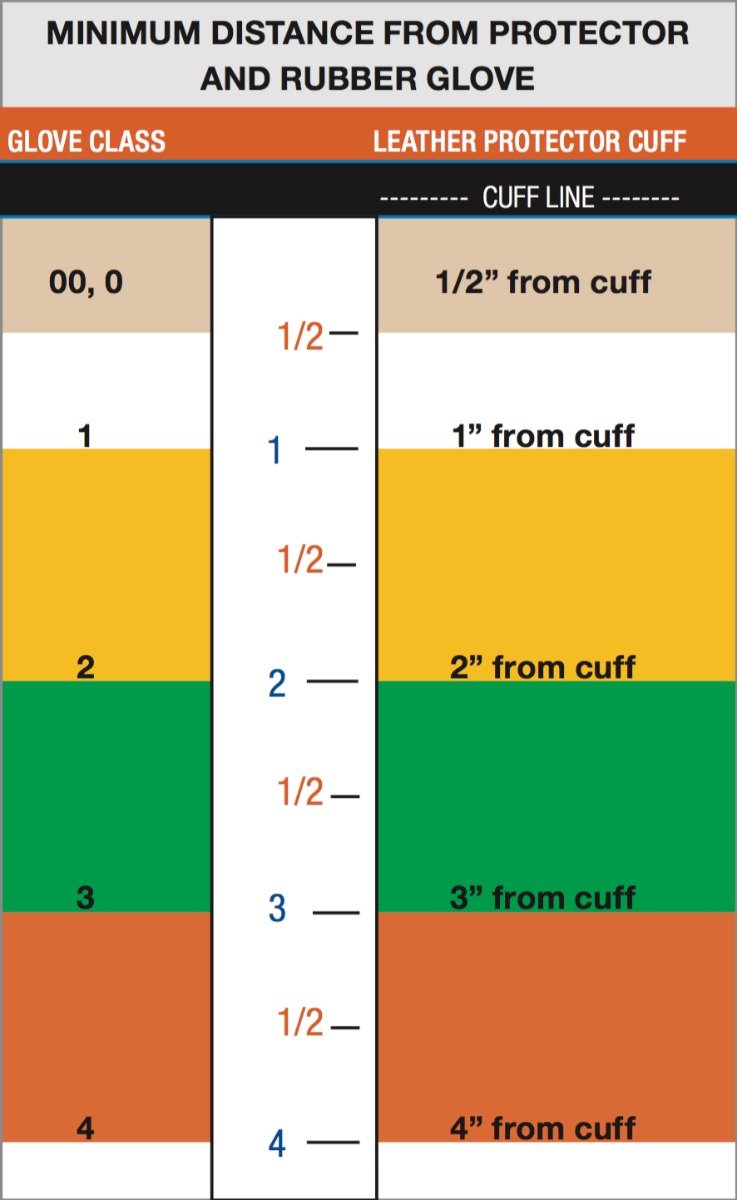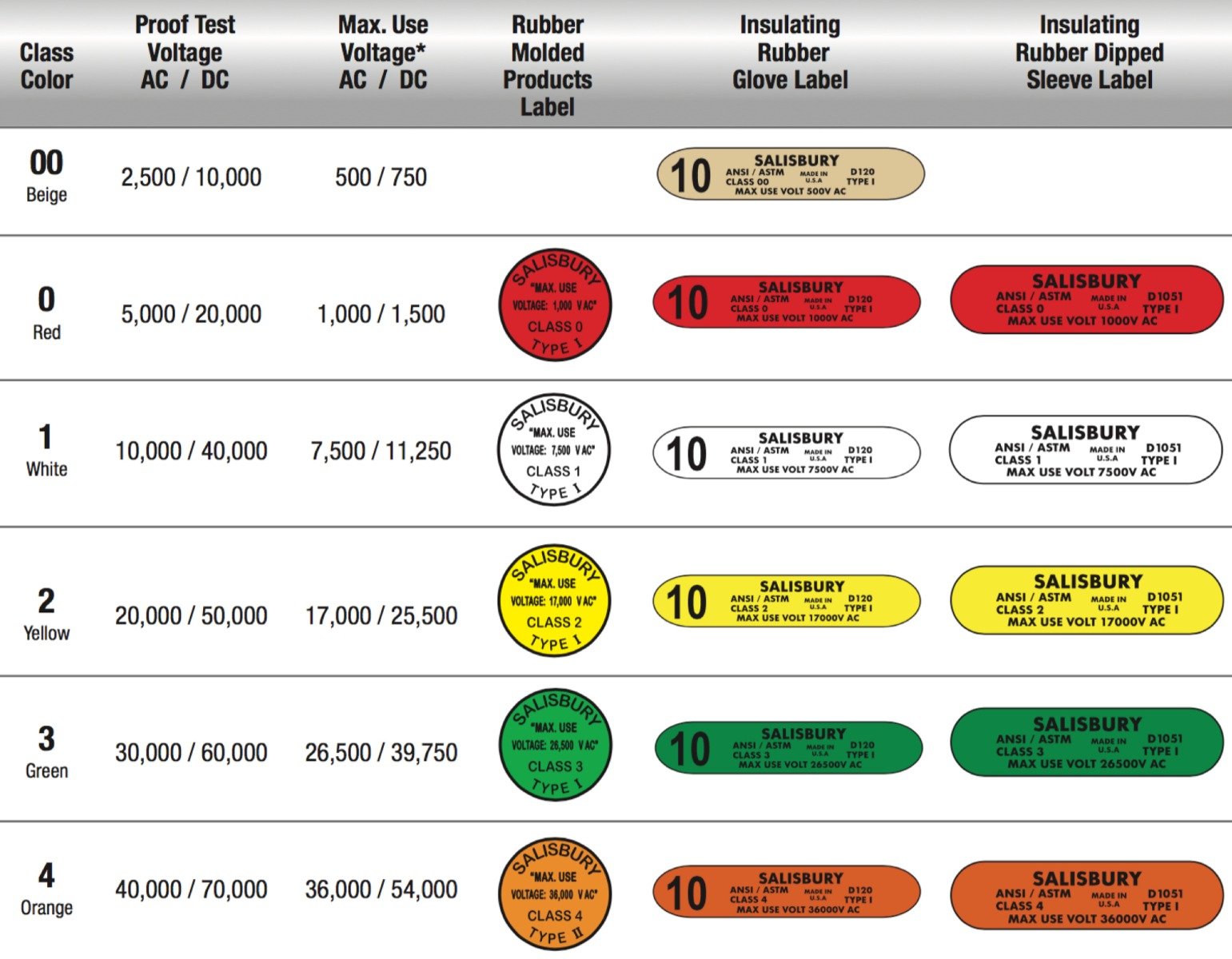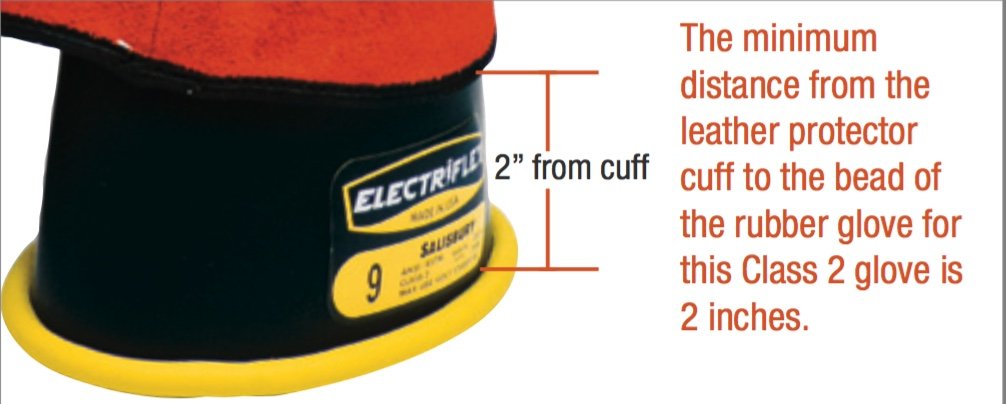WUE (NAIL CERTIFIED) TEST LAB
The lab is able to test both low voltage and high voltage protective rubber products from Class 00 through Class 4. All protective rubber products are returned to the customer cleaned, visually inspected, electrically tested, and with a summarized test report on each product tested. Electrical or visual failures (rejects) are clearly marked and returned to the customer (with a new tested replacement pair shipped from WUE’s extensive stock, if requested). Each item is individually tracked at the laboratory and all gloves and sleeves are individually ID-labeled (if required by the customer).
For shipment, the products (sleeves and gloves) are placed in a heat-sealed plastic bag and returned in the original boxes (if requested by the customer) and then balk packed.
All tested items are identified with the test date, the maximum use voltage, and the WUE laboratory name.
Other accessory products like leather protectors, canvas bags, dust, sleeve buttons, etc. are also stocked by WUE for immediate shipment.
Click here to read an article from Colorado Country Life Magazine about how the WUE Test Lab is providing value to its members and the western region by providing a high-quality testing service.
Western United’s Rubber Glove Testing Lab was built in late 2015. The test lab area is a separate enclosed area within the WUE Brighton warehouse facility, has its own air and humidity control, and is equipped with the most up-to-date advanced test equipment.
WUE uses state-of-the-art equipment: Von manufactured AC/DC electrical rubber test equipment (gloves, sleeves, line hoses, blankets, and protective covers), Salisbury glove and sleeve inflators for visual inspection, Bierer resistance tester for grounds and jumpers, UniVac washing and drying equipment for cleaning the rubber goods, and Hanco portable fixture with AVI hipot tester to wet test fiberglass sticks. All equipment is operated by qualified and trained WUE personnel testing to the latest ASTM and manufacturer standards for each particular type of protective product providing a valuable, local and reliable test facility. WUE also assembles grounds and jumpers per customer specifications.
Care and Use of Rubber Gloves and Sleeves
Rubber insulating gloves & sleeves, when in good working condition and properly used, are designed to protect the wearer from serious injury, death and the potential of electrical shock and burns. This guide does not serve as a total warning against all potential hazards. This information should be reviewed in addition to your employer’s written safe work practices and procedures.
Proper care and use of these products is essential to the safety of the user. Gloves and sleeves should be correctly sized and properly fitted to the user. Gloves and sleeves should be inspected visually by the wearer each day before use, during the day between jobs, and after use at the end of the day. Leather protector gloves should be removed from the rubber gloves for inspection and storage within a suitable storage bag or container. Insulating sleeves should be stored without creasing in a storage bag or roll-up. The working surface of rubber gloves must be free of any defects. Rubber gloves should be washed between test cycles using a mild detergent and thoroughly rinsed with clean water to remove abrasive grit, body sweat and oils, residuals of medicines and skin treatments. Air dry with the right-side-out. Gloves and sleeves can be damaged by many chemicals, especially petroleum products such as oils, fuels, hydraulic fluids, inhibitors, paints, hand creams and medicinal salves. If contact is made with these or other suspect contaminants, the surface should be wiped of immediately. After washing, rinse thoroughly and air dry. Inspect for signs of physical change or chemical deterioration. Swelling, softness, hardness, stickiness, cracking or checking are causes for rejection and these conditions, if found, should cause the item to be removed from service and not be uses again without first being re-tested per ASTM F496, specification for In-service care and insulating gloves and sleeves. Reference ASTM F1236. Guide for visual inspection of electrical protective rubber products. For additional information and photos of the conditions referenced above. Rings, watches, piercing and jewelry should not be worn when wearing rubber gloves and/or sleeves.
The employer is responsible for record keeping and tracking of all in-service personal protective equipment. One designated individual shall be responsible for the tracking, issue, rotation of Inventory, and the timely re-testing of the PPE needed to satisfy the employers’ workforce requirements. The maximum time period between tests shall be determined by the frequency of use, severity of use conditions, and comfort level of the user(s), but shall not exceed six (6) months for rubber gloves and twelve (12) months for rubber insulating sleeves. The date stamp applied to the back of each glove and sleeve issued for use shall not be more than six (6) months for gloves or twelve (12) months for sleeves.
Leather protector gloves should be sized over the rubber gloves for a snug fit without causing undue compression or deformation. Rubber gloves and leather protectors are manufactured with +/- ½” variation in size and length. Larger or smaller labeled size protectors may be required to achieve a proper fit for each rubber glove. The clearance between the top of the protector cuff and the reinforcing bead of the rubber cuff shall be one (1) inch per 10,000-volt rating of the rubber glove to provide for flashover clearance for the user. 1” separation for class-00, class-0, and class-1, 2” separation for class-2, 3” separation for class 3, and 4” separation for class-4 gloves, regardless of the overall length of the rubber glove. Always release the strap back tension from protector gloves before storage. Store gloves in a finger-tip-up orientation inside a glove storage bag. Sleeves should be sized and worn to provide at least 1” overlap per 10,000-volt class rating from the cuff of the sleeve to the inside cuff of the rubber gloves when in operation position. Also reference OSHA spec 1910.269, NFPA 70E, and ASTM for more information.
Care and Sizing of Leather Protector Gloves
LEATHER PROTECTOR GLOVES should always be worn over Rubber Insulation Gloves to provide the needed mechanical protection against cuts, abrasions, and punctures.
It is the responsibility of the purchaser to specify the overall length of the protector gloves. The Clearance Table below shows the minimum distance which shall be allowed between the protector glove cuff and the bead of the rubber glove per ASTM F496 Specifications
Proper care of the leather protectors is essential to user safety. Inspect the leather protectors when inspecting rubber gloves for common problems such as cracking & cutting, chemical attaching, folding, snags, etc., that result from metal particles, embedded wire, abrasive materials, or any substance that could physically damage the rubber gloves.
Testing Requirements
ASTM F496, 7.1 states rubber gloves should be electrically tested before their first use and every six months after, and sleeves, line hose, blankets, and hoods have their own specific testing cycles.
The chart to the right shows best practices for testing cycles. While cycle dates are determined by the end-user, maximum testing intervals are mandated by ASTM.
Best Practices |
|||||
| 30 Days | 60 Days | 6 Months | 1 Year | If Damage Suspected | |
| Gloves | Optional | Optional | Required | Required | Required |
| Sleeves | Optional | Optional | Required | Required | |
| Blankets | Optional | Optional | Required | Required | |
| Line Hose | Optional | Optional | Required | ||
| Hoods | Optional | Optional | Required | ||





